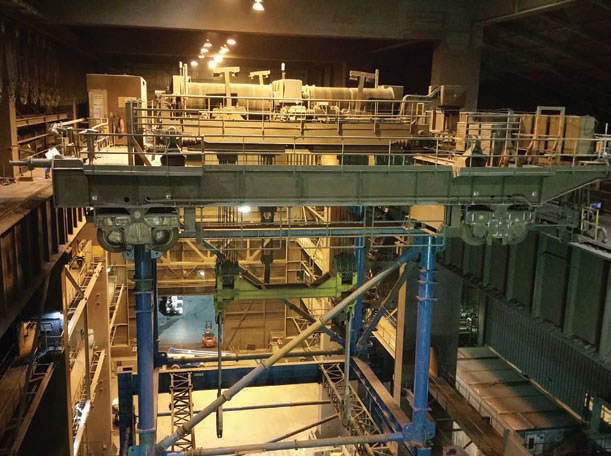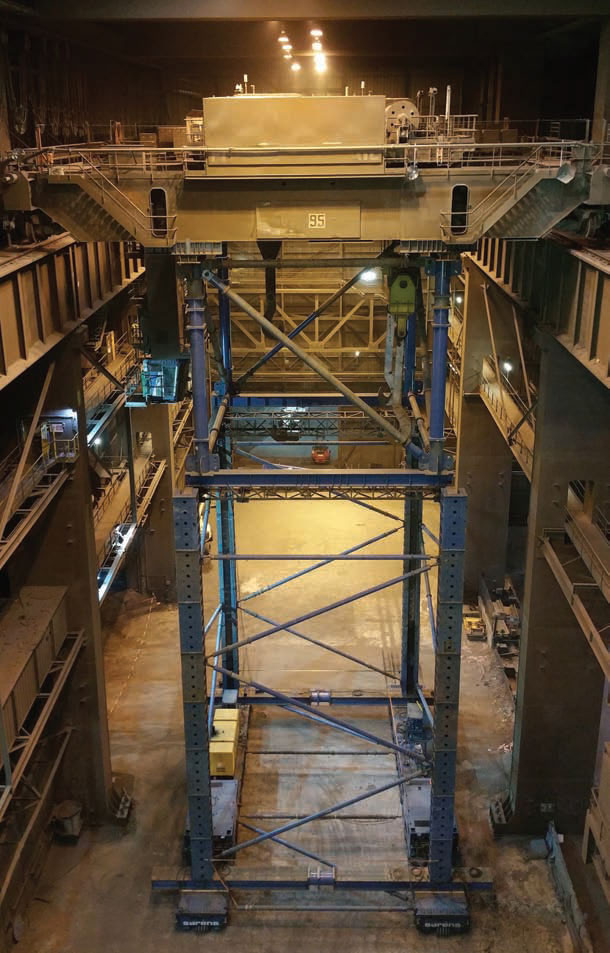Jacks on SPMTs
22 January 2018Sarens has changed the position of an overhead crane using a combination of a jacking system positioned on self-propelled modular trailers for steel and mining company Arcelor Mittal
Arcelor Mittal asked Sarens to change the position of one of the main overhead cranes in the convertor hall at a steel factory near Marseille in the south of France in order to carry out maintenance work.
Manager. SPMT operations. at Sarens, Kris Nuyts explained: “As multiple overhead cranes use the same rails, maintenance work can only be done safely and without disturbing the production process when this particular crane is positioned at the far end of the building.”
To change the position of two overhead cranes on the same rails, one needed to be lifted or lowered, and the second one had to be simply driven to the opposite side. There were two possibilities to execute this kind of job.
“The first one was to use a lattice boom crane outside of the building, the other option, as we did, was to lift, turn and lower the structure with a combination of a jacking system positioned on self-propelled modular trailers (SPMTs),” Nuyts said.
“Amongst disadvantages of working outside with a crane, the main was related to the required large area next to the building to assemble the crane, which would inevitably obstruct part of the production process.
Another concern from the client was the high risk of Mistral wind conditions because during that time it’s usually impossible to work with any crane.
“Being dependent on weather conditions does not fit together with the tight schedule for shutting down part of a steel plant.”
The structure provided by Sarens consisted of two parallel 13-axle lines SPMTs standing 12m apart and four Sarlift 2500 modular towers with a total height of 20m. The jacking system has a 250t capacity climbing jack inside the U-shaped tower elements.
At the top, they installed a 12m high steel support based on their modular bracing systems.
“We have done similar work on overhead cranes before, but in this case the main challenge was the level of the rail at 32m height in combination with a weight of 320t,” Nuyts said.
“It was very high related to the narrow place and we were forced to design our structure as large as possible to ensure the stability. This in turn creates a huge challenge to assemble the structure within the limited space allocated by the client.”
The assembly of the structure took about one week. Picking up and turning the overhead crane 90°, lowering down 16m, driving the other overhead crane to the other side, and repositioning back the crane in the rails, was done within a timeframe of 36 hours.
This operation was carried out twice, once before and a second time after the works on the overhead crane.
“We are proud to have carried out this job using a combination of several in-house developed modular jacking and bracing systems,” Nuyts said. “The assembly of the structure in this narrow space required a very detailed study.
The complete operation was done safely and successfully within the agreed timeframe, taking into account the strict safety and work permits rules in a steel plant.”

